It's Time to Have a DTR with Your Stuff
Let's call this what it is.
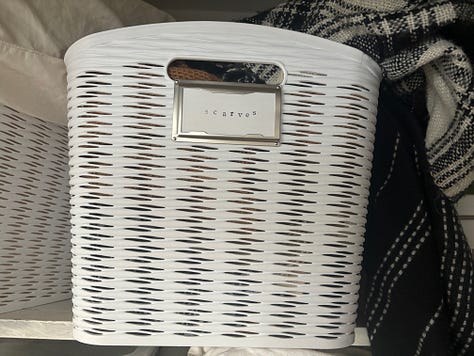
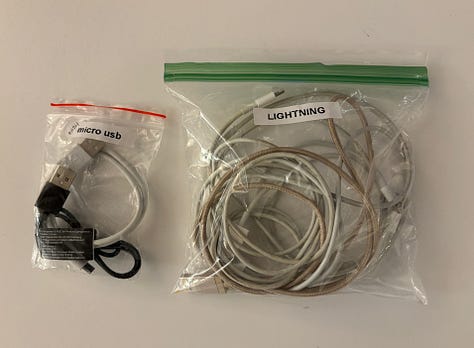
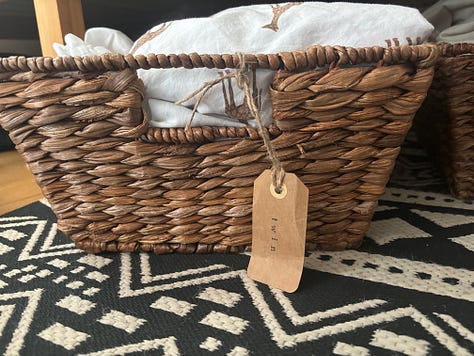
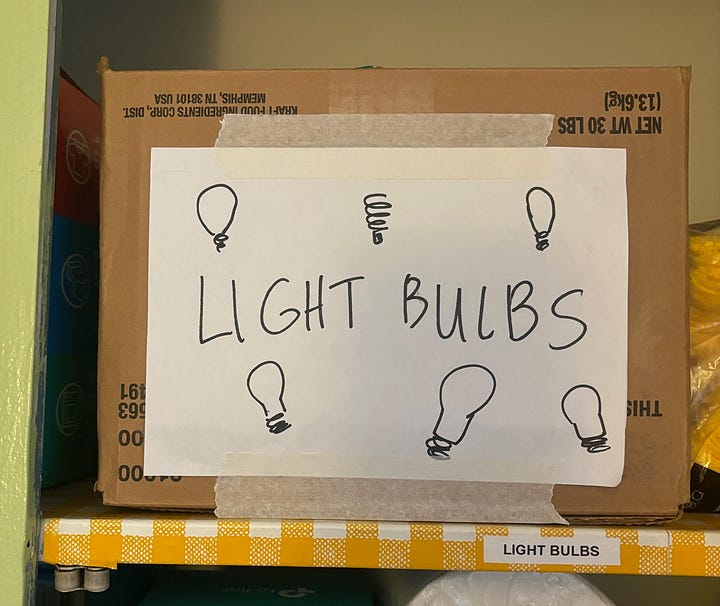
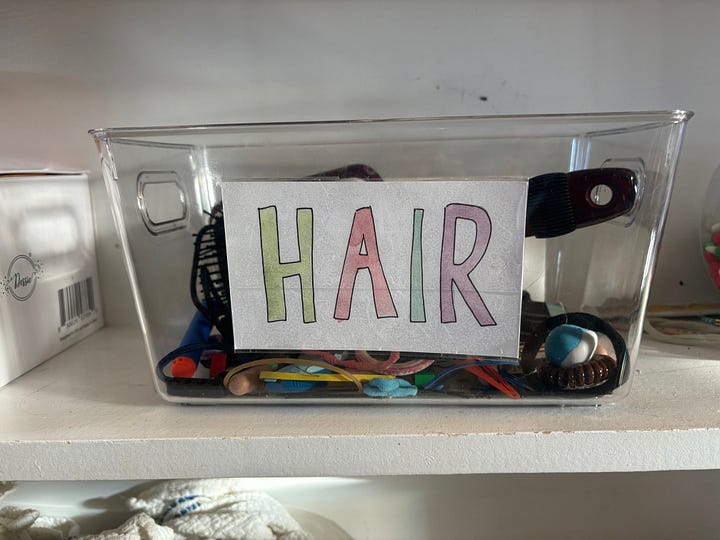
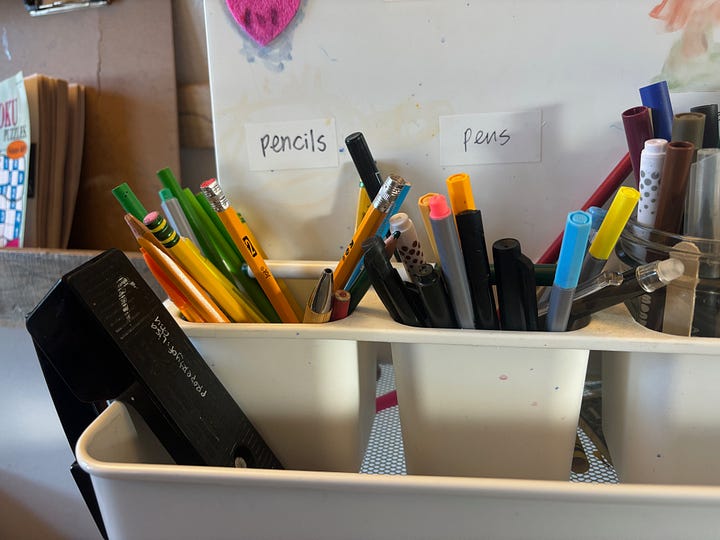
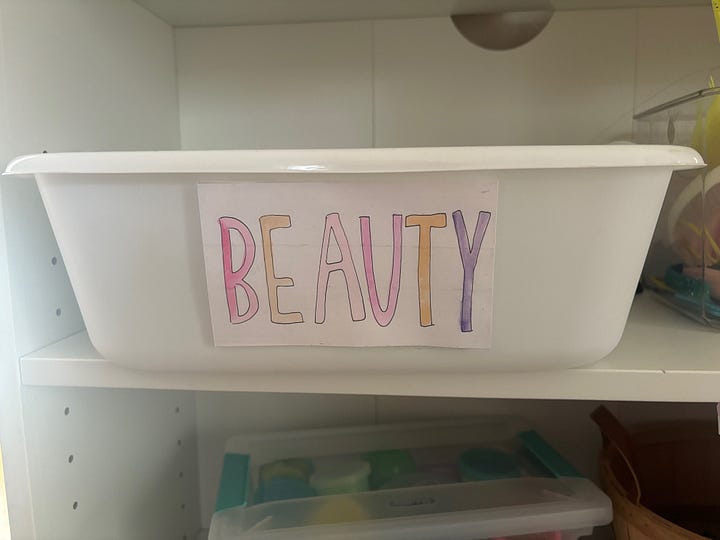
The adage “a home for everything and everything in its home” is supposed to help my family stay tidy, but sometimes it’s hard to decide on where those homes should be.
Do we store things with other like items, even though that location is far away from where we use this item? Do we need multiples of this item in various locations? What if I put something away in its supposed home, but then I forget about it because it’s hidden in a cabinet?
As a creative person, I’m able to see connections between seemingly disparate things, which can make it challenging to define discrete categories.
I can also be slow to commit to a label. What if I want to change it later? What if the labels leave a residue when I try to remove them?
It feels like too much decision fatigue. Not to mention, what if it looks ugly and overdone after I label things?
However, I have noticed that when I have made small, reversible attempts to decide on a location and label stuff, my family and I naturally put more things away.
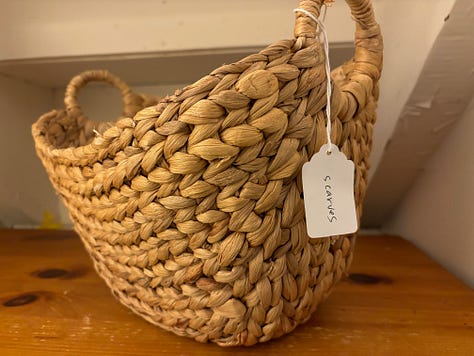
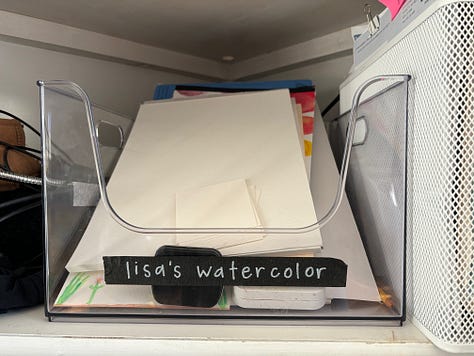
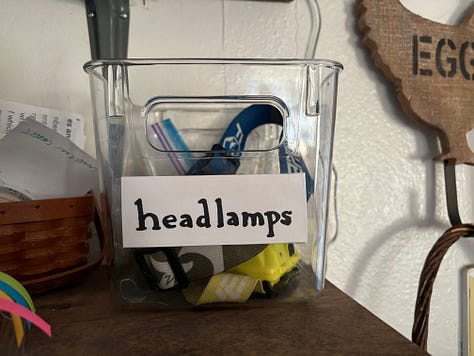
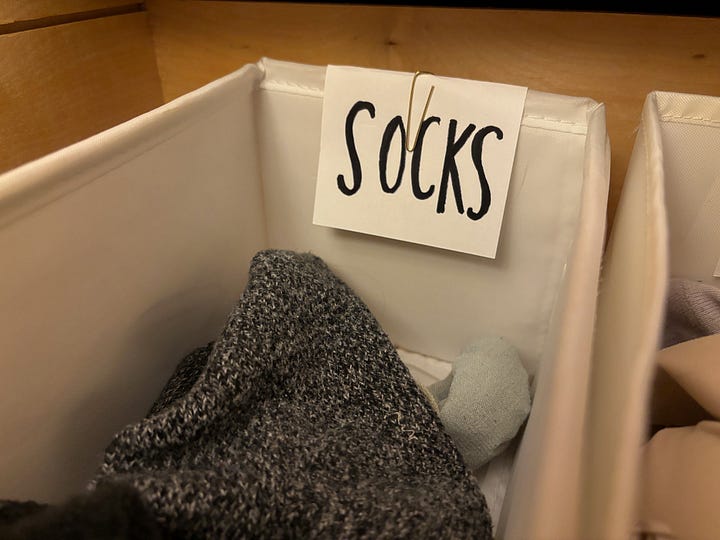
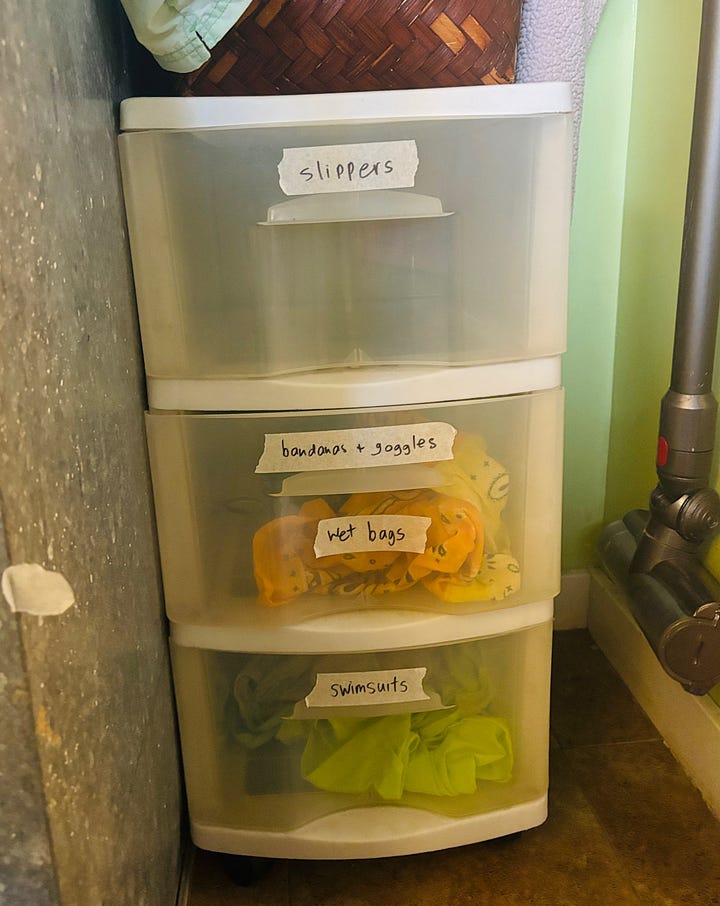
Why Label Things (Also, It Doesn’t Have To Be Forever)
Labels are non-verbal instructions, providing direction without inflaming those who struggle with demand avoidance. Labels also provide reassurance and validation.
Even if you haven’t fully decluttered1 your house—and even if you’re not convinced that labels will work—you can try this idea for no cost (besides time) right now.
I know that one of my big hang-ups was that I didn’t know where things should live, and things are constantly evolving and changing with kids.2
I started by labeling only one thing in my house: the headlamps (shown in the image gallery above). And then people started dropping their headlamps in there without me saying anything. This inspired me to keep going, one label at a time.
You’re just trying out a label and seeing how it fits. It doesn’t have to be forever.
How to Get Started with Labelling
Pick one thing to label. I recommend starting with something that really bothers you. Common culprits: dirty socks, school papers, tech charging cables.
Find a container. It can be a cardboard box, a basket, a drawer.
Define the category, as broadly as possible.3 It can be fun to imagine you are playing the game Connections, trying to figure out the commonality between different-ish items.
Add a temporary label. With scratch paper taped with masking tape, or a nicer label.
Put the newly labeled container in the place you most often see those things dumped, and see if your family puts things away without you having to say anything.4
Labeling gives your stuff an address, whether temporary or permanent.
You can upgrade the container and/or label when you feel good about the solution.
Don’t worry about getting the labels “just right.” “Papers I don’t know what to do with” is a perfectly acceptable category.
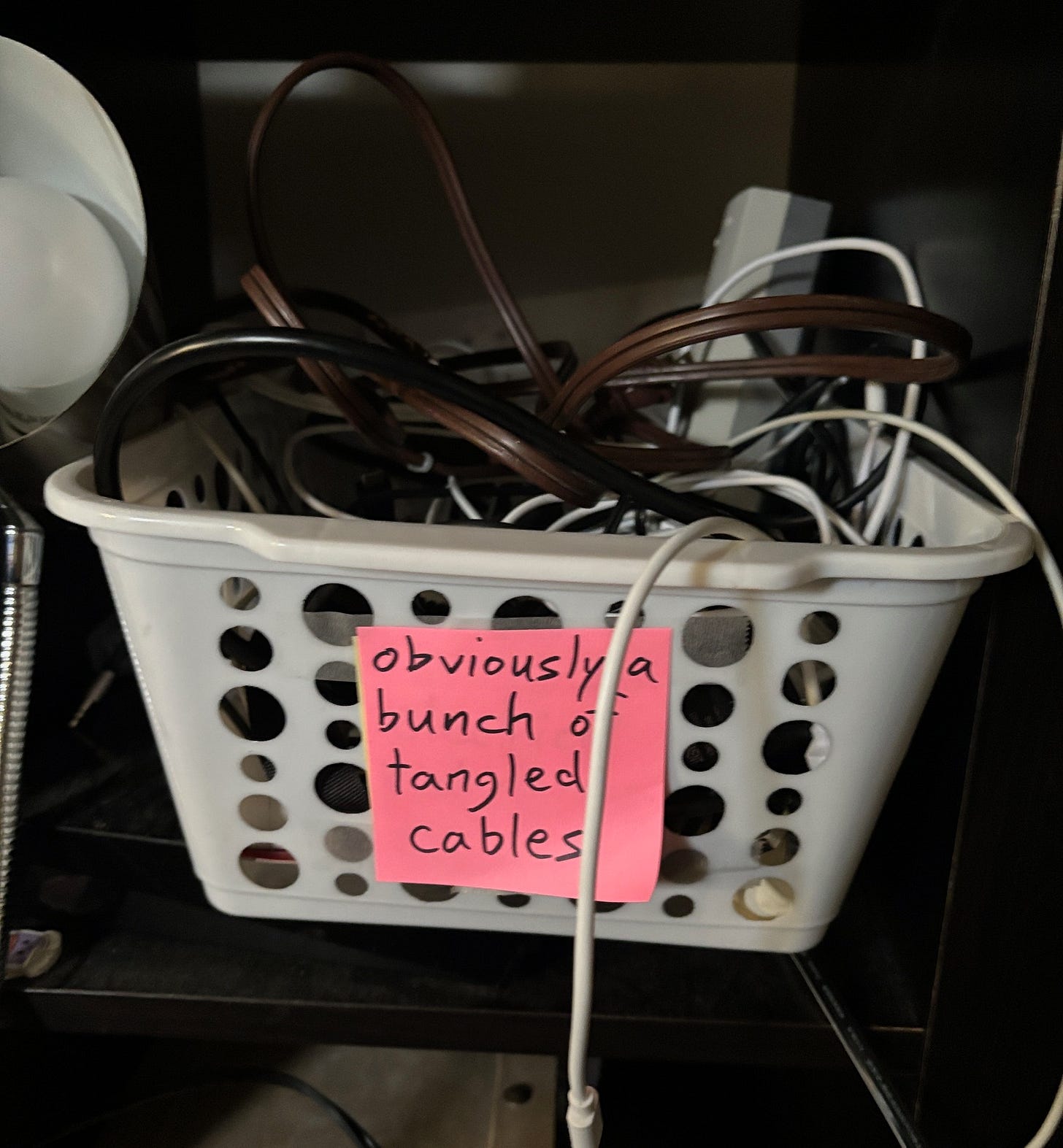
My Favorite Supplies for Labelling
Post-Its Notes: These work well as temporary labels, when you’re figuring things out and may want to switch things around. (I rely on these knock-offs.) We are also a huge fan of sticky note tape from Daiso.
Index cards: I use shipping tape to “laminate” the cards.
Removable labels: We’ve used these labels for Tupperware in the fridge (they stay on through the dishwasher, and yet are easy to take off). These make a good semi-permanent solution for most small tubs.
Black painter’s tape: This is another great residue-free option; I like to use it with a chalk pen/crayon.
Paper tags and twine: These can be used to attach labels to woven baskets.
Dymo labeler: I like this one rather than the fancier bigger QWERTY labelers because those ones seem to waste excessive tape on either side of the label. But I understand why people like those, for the various types of tape, including greater levels of waterproofing.
If you’re hesitant to label but know this is the next right step for you, this printable tracker might help you get some momentum.
Closing Randomness
📅 25% off sale on my printable calendars. They print well as 11 x 17, in addition to standard letter size.
▶️ Rebel With a Plan: “junk journal for my brain” and using up hoarded planner supplies
📺 Get ready to have all your productivity go down the drain: Miss Scarlet and the Duke (HT:
) [My apologies—since drafting this post, the series has left Prime, but it’s still a worthy recommendation. If you have old-school TV like my dad and watch PBS with bunny ears, I believe you can view it for free when you following the schedule! ;P]❄️ My girl
has got you covered when it comes to Winter Comfort▶️ 5 Signs You Have ADHD and Autism
🟧 Andrew Knott : ✏️ a funny recent essay and 🎧 a recording of an older funny essay
🌊I did my first (and second!) winter polar plunge, thanks to inspiration from my friend Aly. I understand the craze now.
I’m a huge believer in decluttering, especially if you are easily overwhelmed with how messy your house feels to you. Reducing inventory means the house can’t get as messy, and takes less time to reset to basic levels of tidy. I am indebted to The Minimal Mom, Clutterbug, and Dana K. White for all the tips and encouragement (and body-doubling!) I have received over the years.
If you are a parent, things change so often, whether it be kids outgrowing their clothes/toys, or having to “start all over again” when you have a new baby. (I’ve written before about the problem with art supplies.) It feels frustrating that you might label something once, only for it to last a few months or seasons before it needs to change. But all the more, I think labels are helpful because the state of your stuff is constantly evolving when you have kids. I LOVE LOVE LOVE the Roku show Honest Renovations because the hosts take into consideration that families’ homes need to adapt for kids.
I was tired of seeing hair ties and bobby pins everywhere (on the floors and counters in almost every room), so I put tubs in the living room and bedrooms and labeled them simply, “Hair.”
Instead of asking my girls to suddenly become people who micro-sort things (e.g,, hair brushes, hair ties, clips, bobby pins), I simplified the goal and expectation.
How micro-or macro to go depends on your Clutterbug personality. Macro is often best for families; you will lose the less detail-oriented people if you get too micro.
As soon as I saw how well my first label worked, I labeled a clear bin for my husband and placed it in the spot where he normally dropped his keys after work (even though we have hooks by the front door for keys). He seamlessly started dropping all his things in it, thereby keeping them contained and findable. Some people are Hook People and other people are Basket People. There’s probably one of each in every marriage.

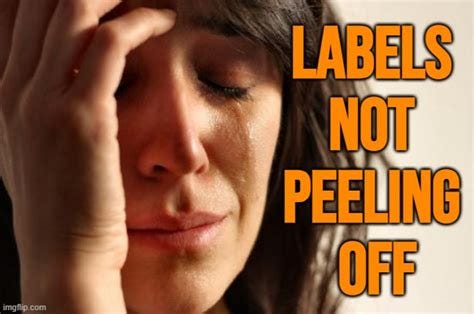
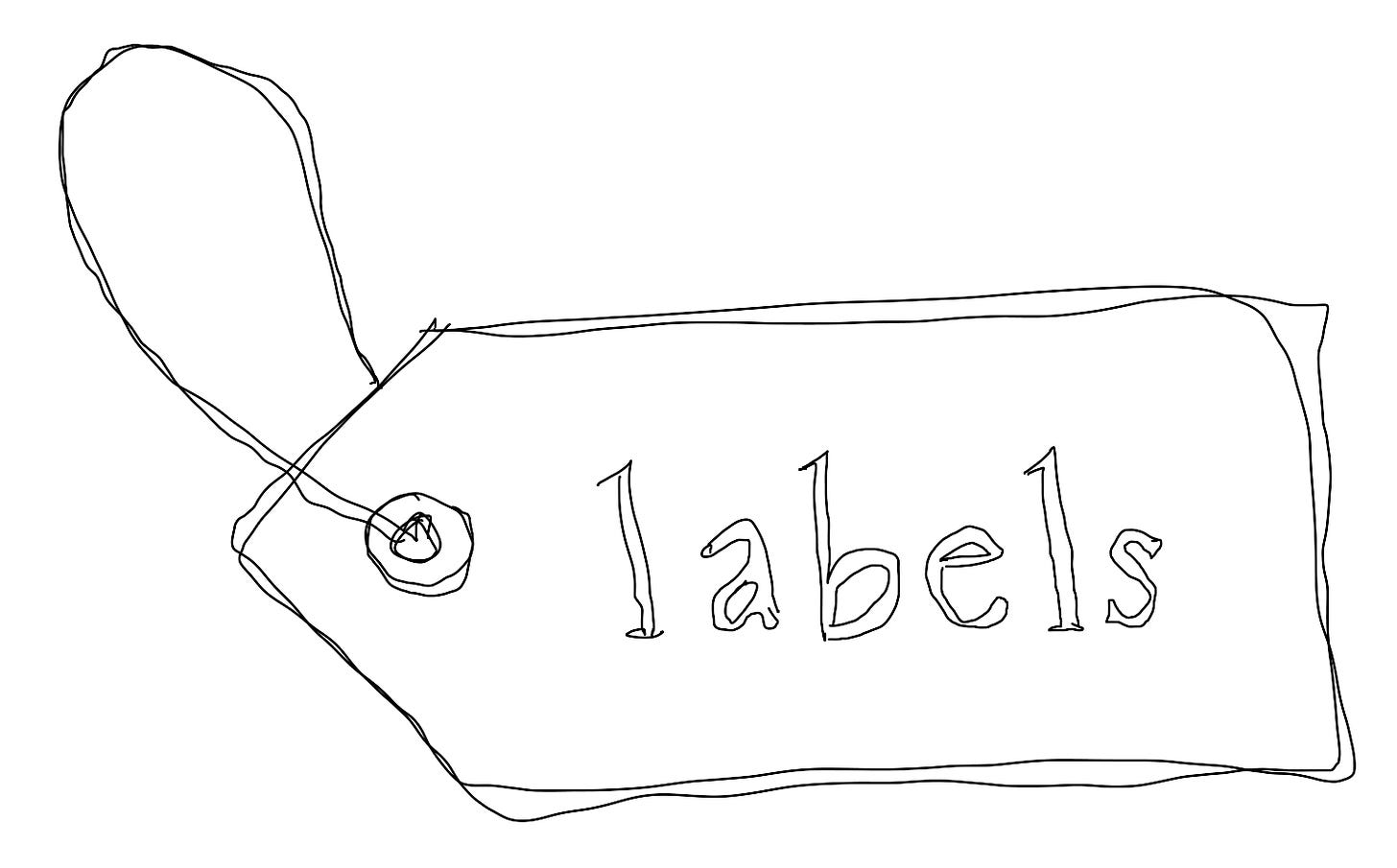
Finally read this and enjoyed it, Lisa! I'm not a label-er in practice but I definitely categorize things mentally. A physical label could really help my kids in the future.
There are so many good tidbits! And I adore your label sketch. 💜
“Labeling gives your stuff an address, whether temporary or permanent.”
“Some people are Hook People and other people are Basket People.” —I’ve never thought about that but you’re SO right!